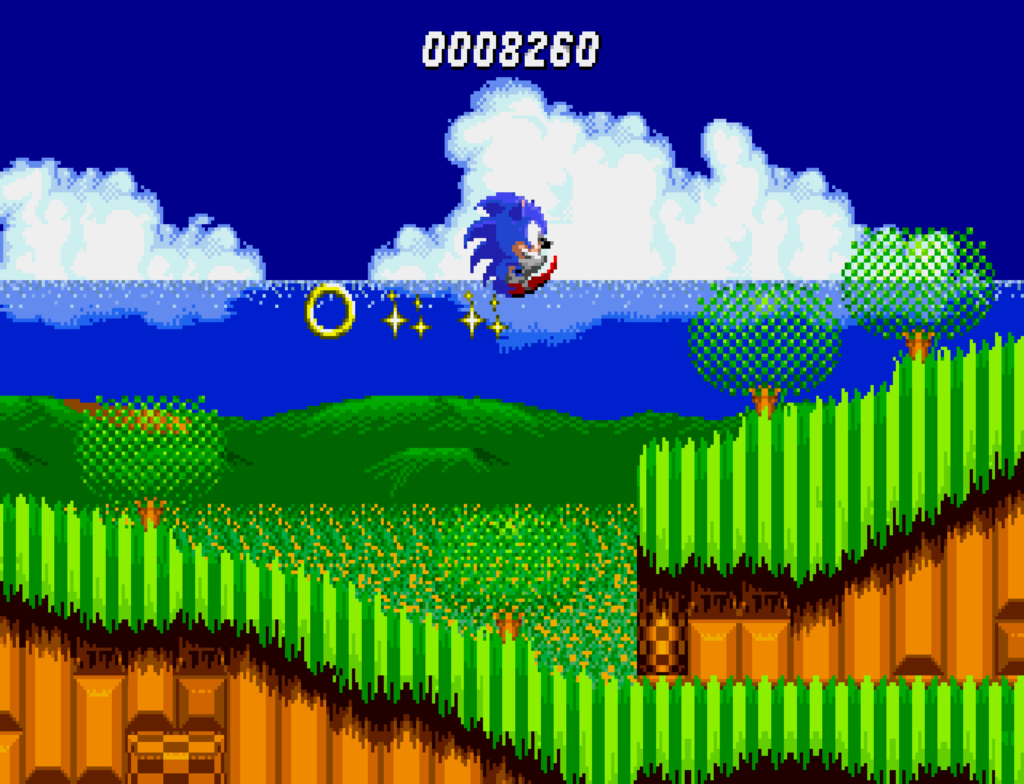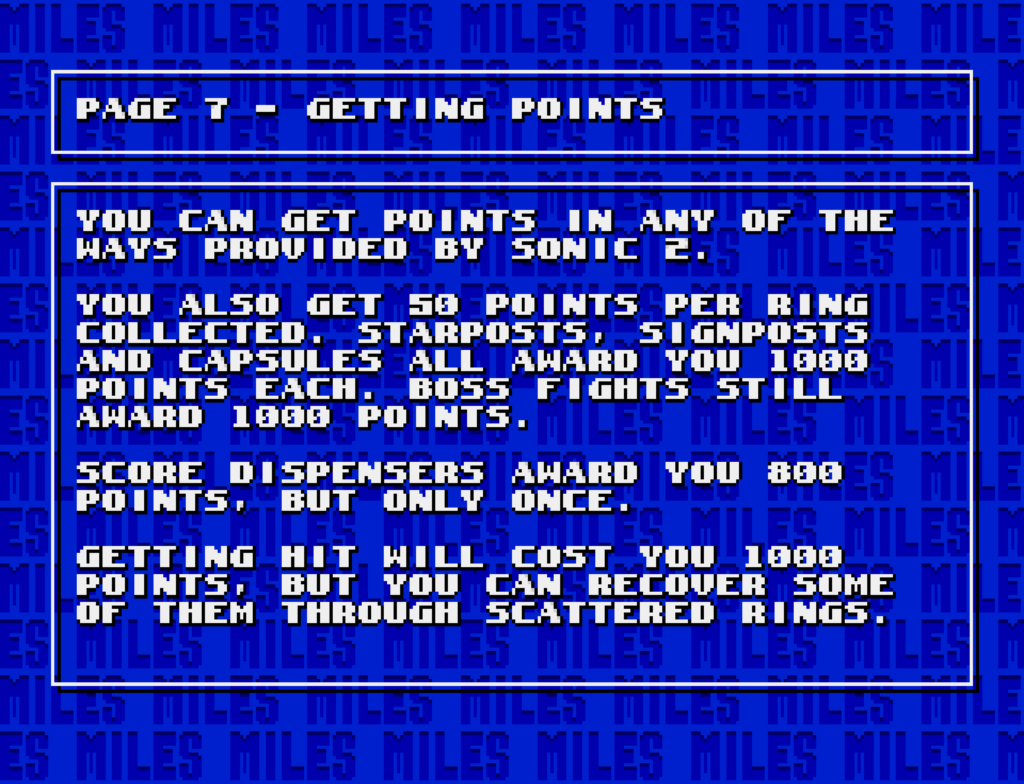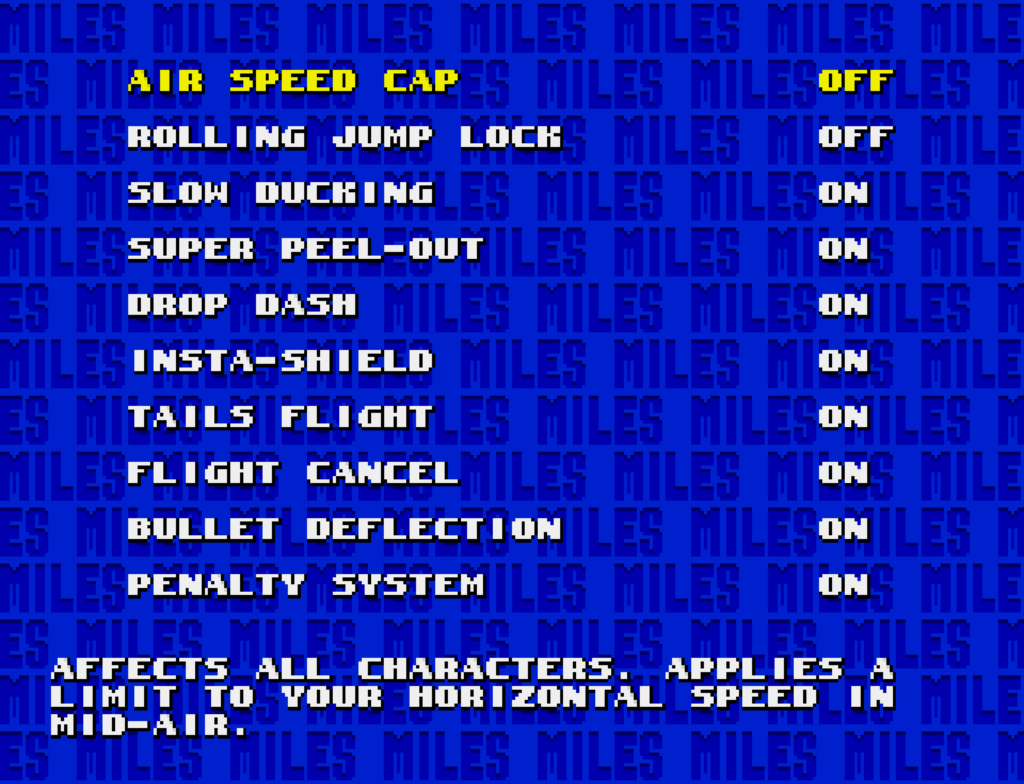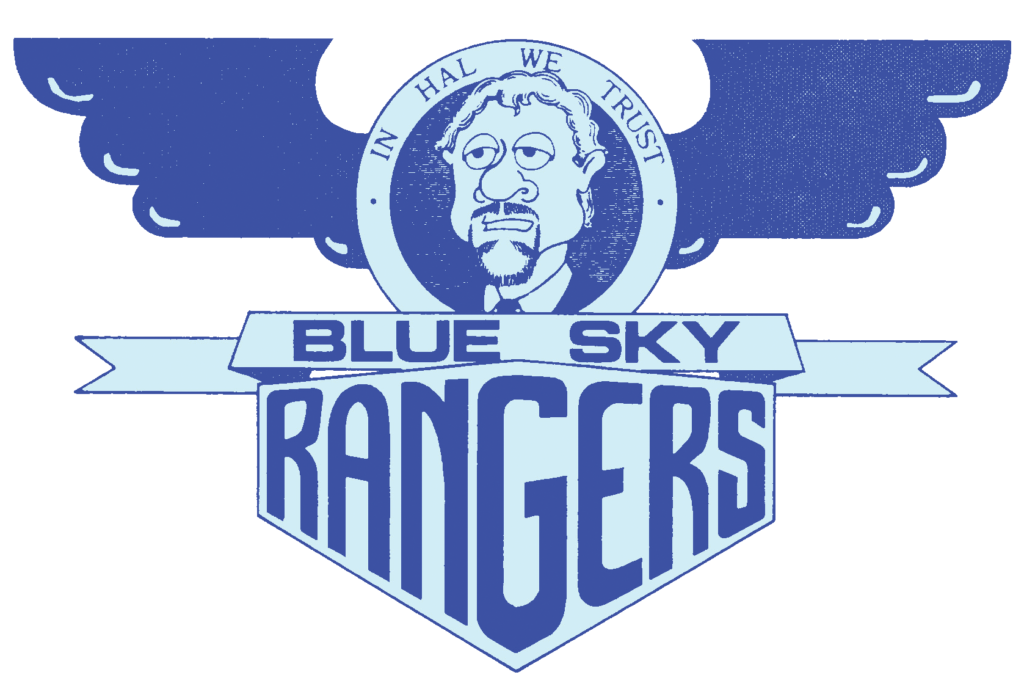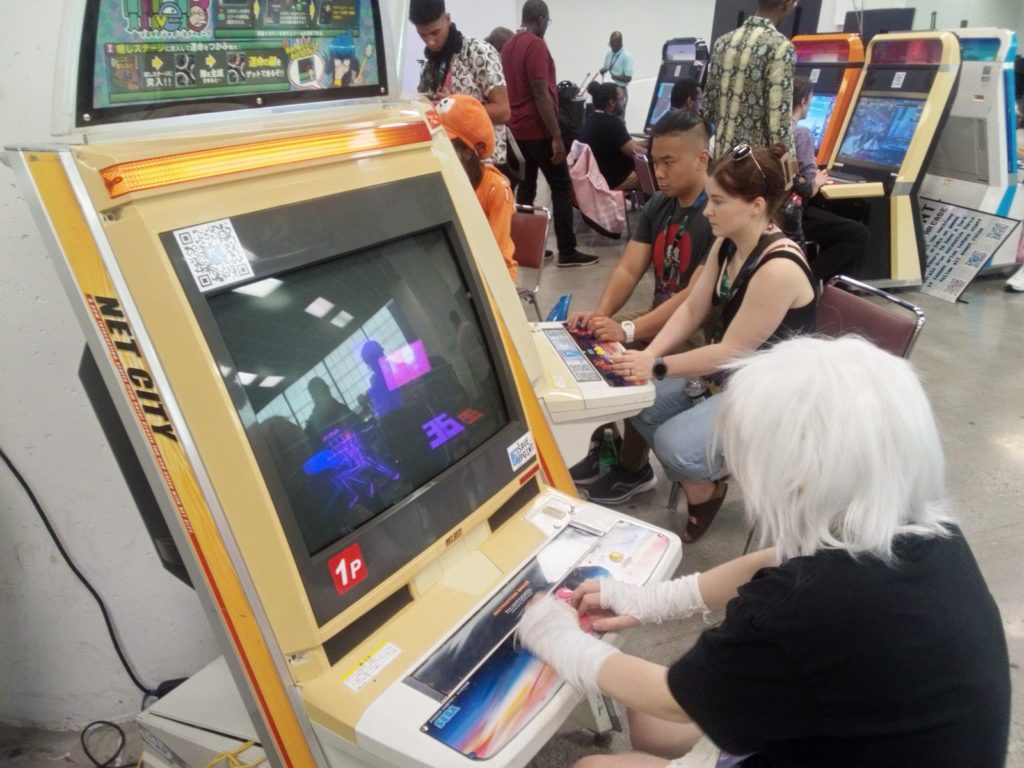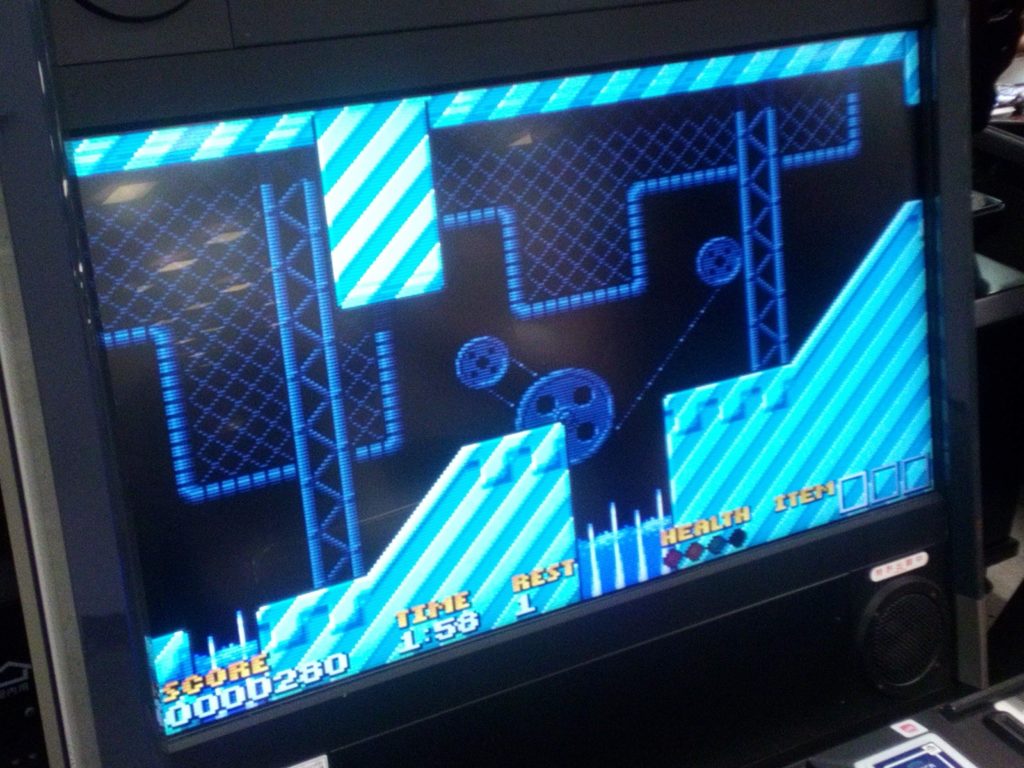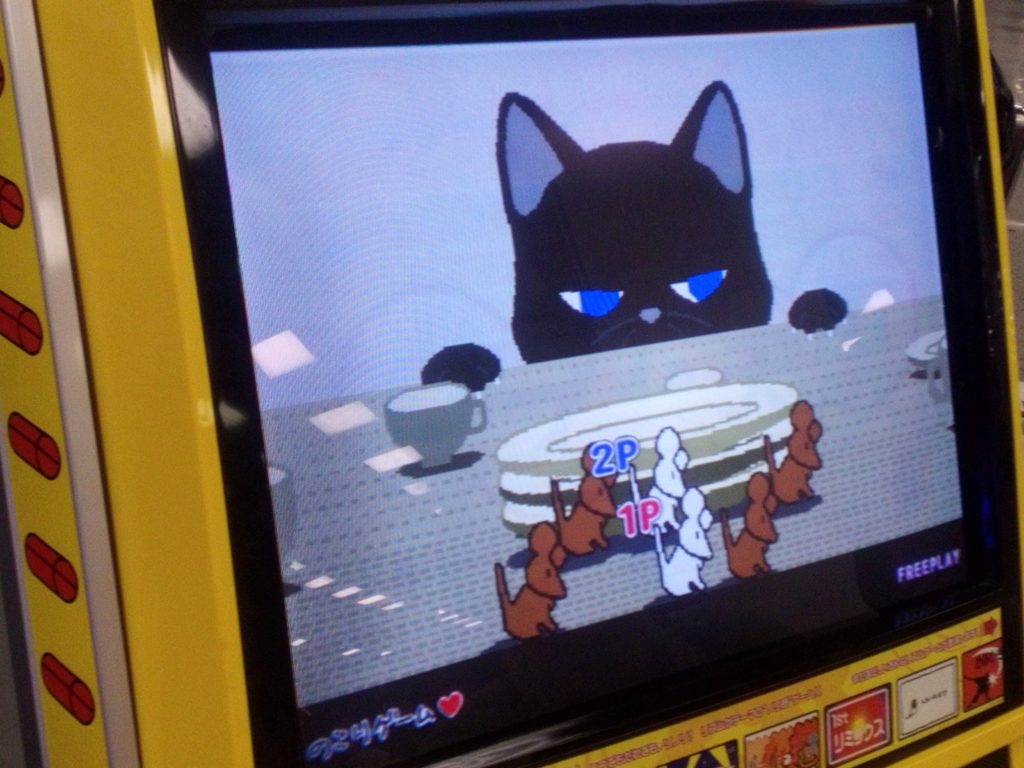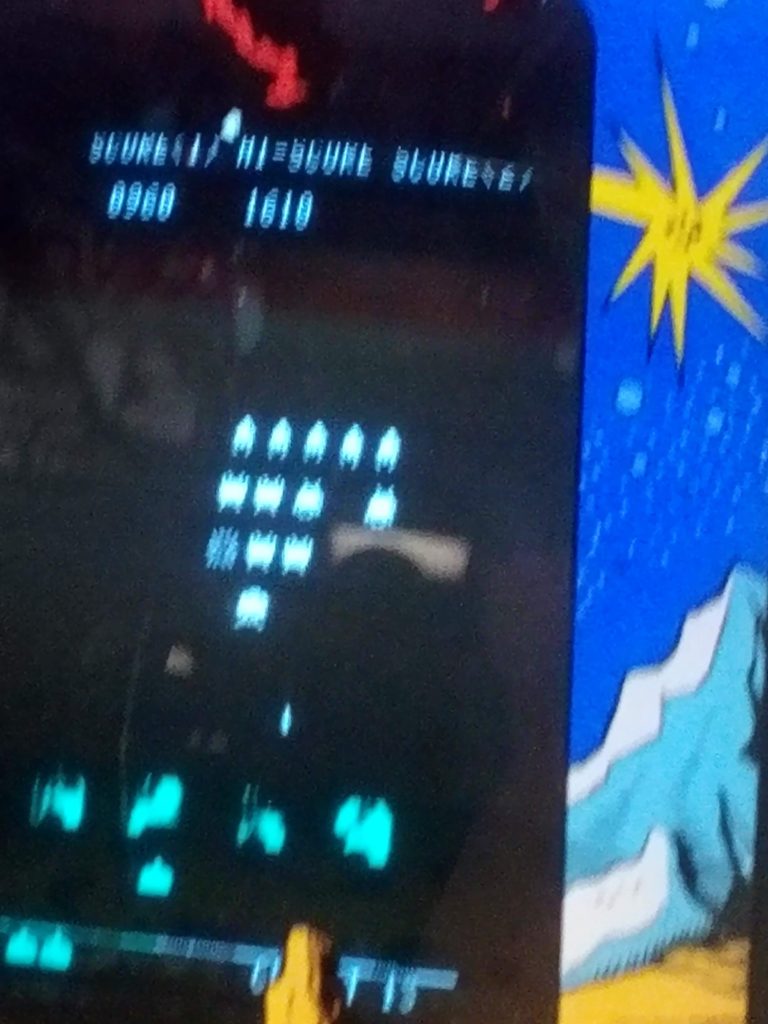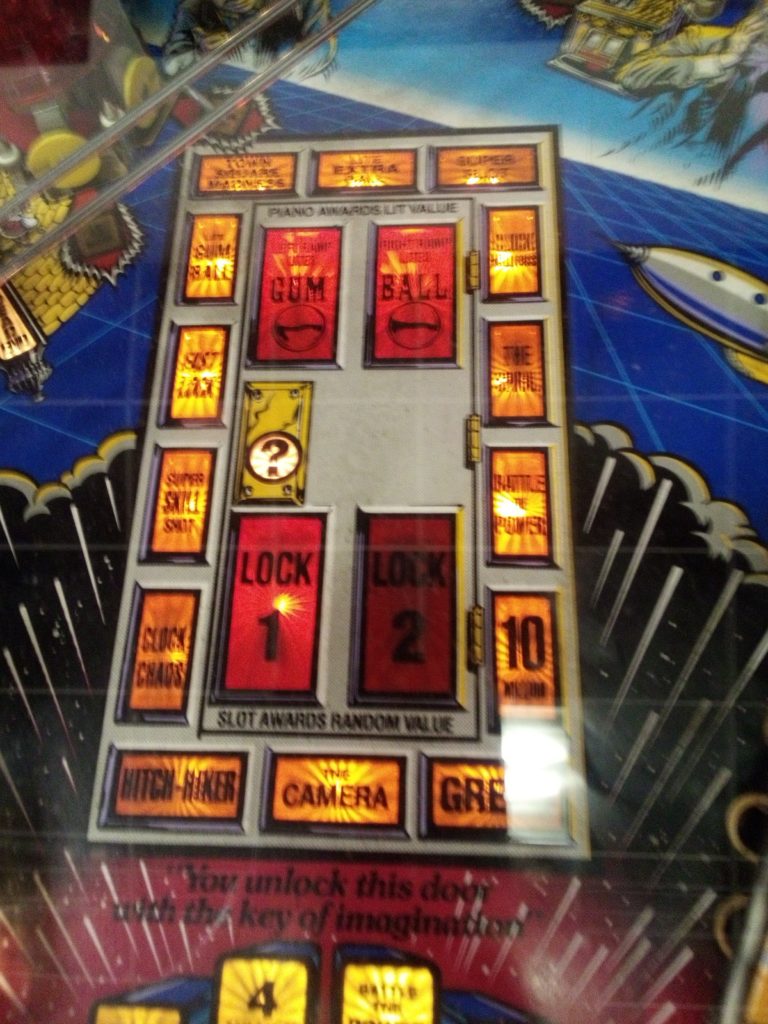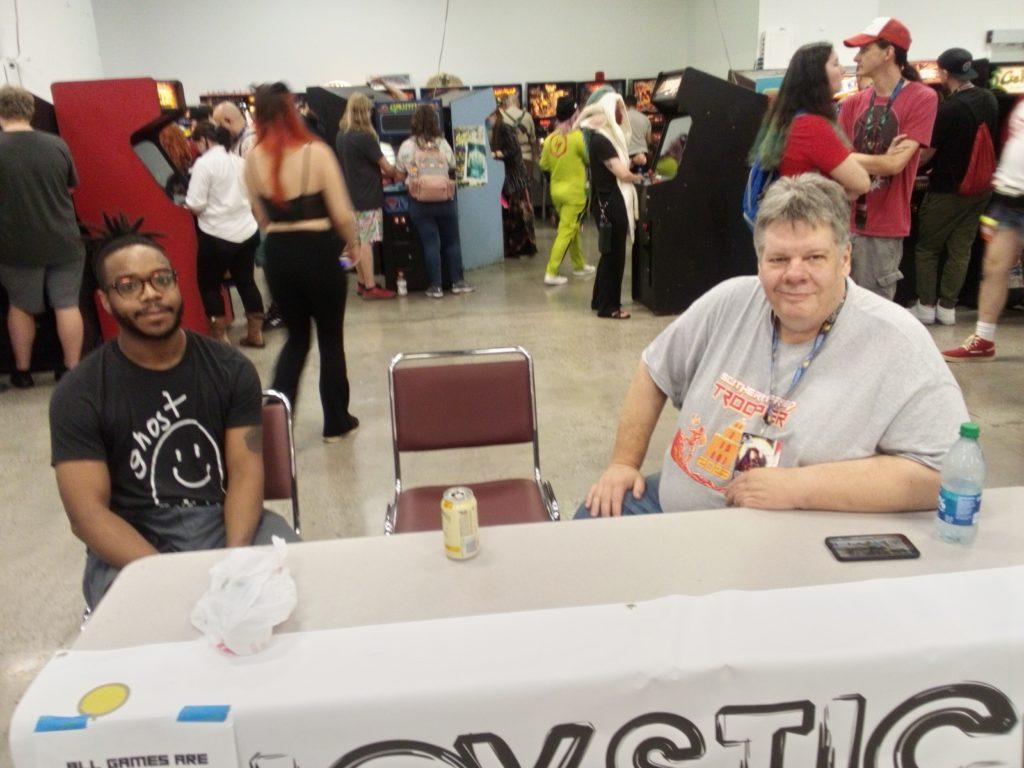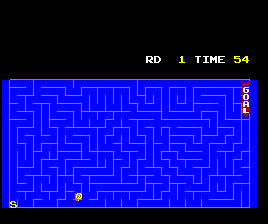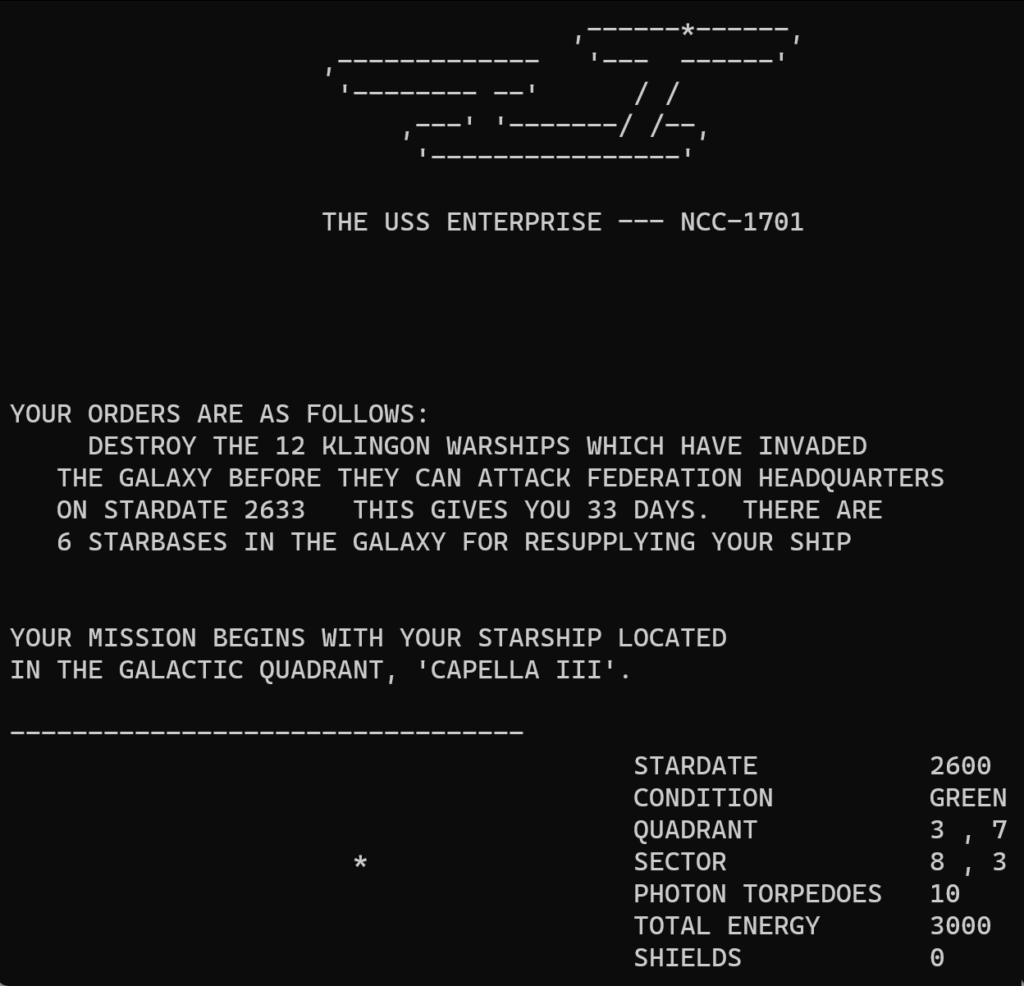
On Romhack Thursdays, we bring you interesting finds from the world of game modifications.
It’s another romhack post that’s really not a romhack, but kind of pretends to be one. Gridlock’s 21st Century Roguelike Pac-Man (which I’m going to call 21CRPM) at first looks a lot like the arcade classic, but then becomes something really, really different.
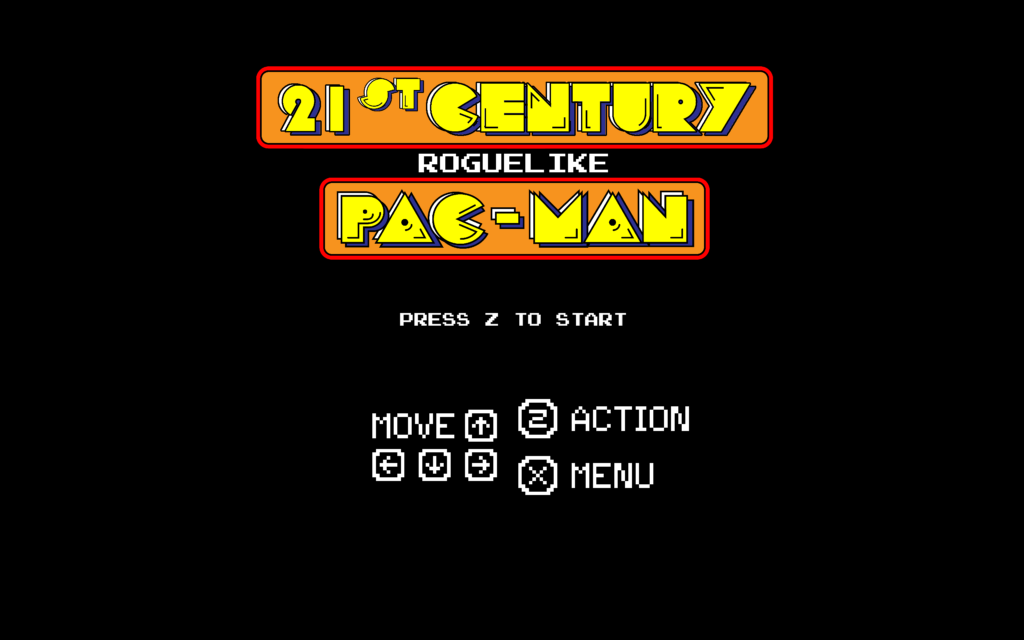
It becomes so different that the game it most brings to mind isn’t Pac-Man but Frog Fractions. It keeps piling on the play mechanics, in a way that the game makes apparent is meant to be humorous, but also sort of, kind of works. I mean of course it’s me saying this, 𝖳𝗁𝖾 𝖯𝖾𝗋𝗌𝗈𝗇 𝖶𝗈𝗍 𝖪𝖾𝗉𝗍 𝖡𝖺𝗇𝗀𝗂𝗇𝗀 𝖮𝗇 𝖠𝖻𝗈𝗎𝗍 𝖱𝗈𝗀𝗎𝖾𝗅𝗂𝗄𝖾𝗌, so maybe I just like that sort of thing. Although the way it’s the most like roguelikes, permadeath, making you start completely over after losing, is possibly the weakest part of it. I had to start over a lot.
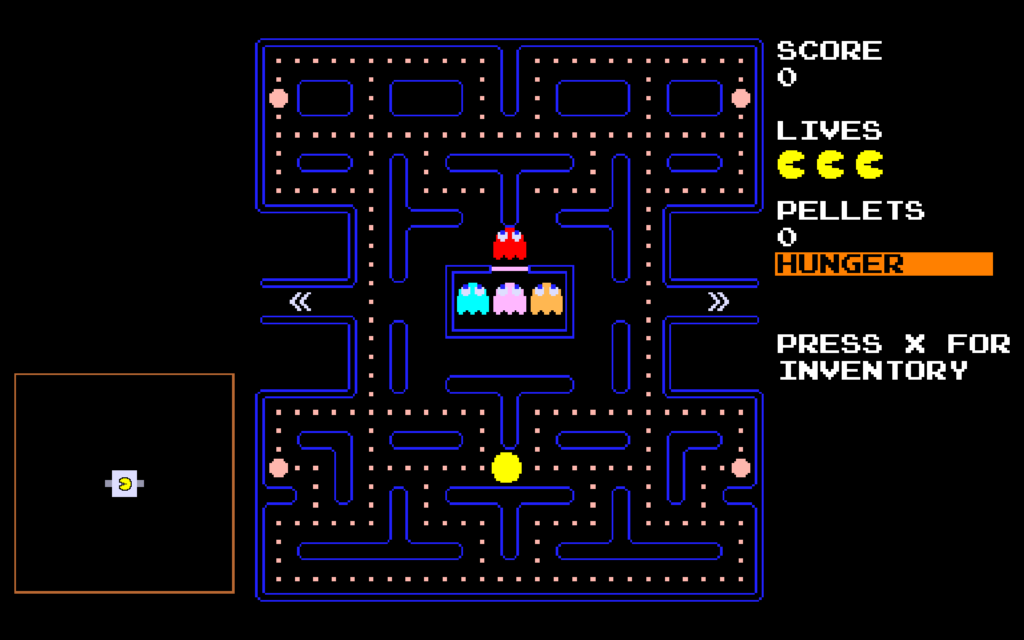
You start in the middle of the normal Pac-Man board, in a field of dots, and the ghosts roaming around as usual. It’s not exactly like classic Pac-Man; ghosts can catch you much more easily on corners (you’ll get caught this way frequently times before you adjust), and the AI is a little different. The Red monster, Blinky/Shadow/Akabei/Oikake, can actually turn right after coming out of the box, and move up through the paths above it.
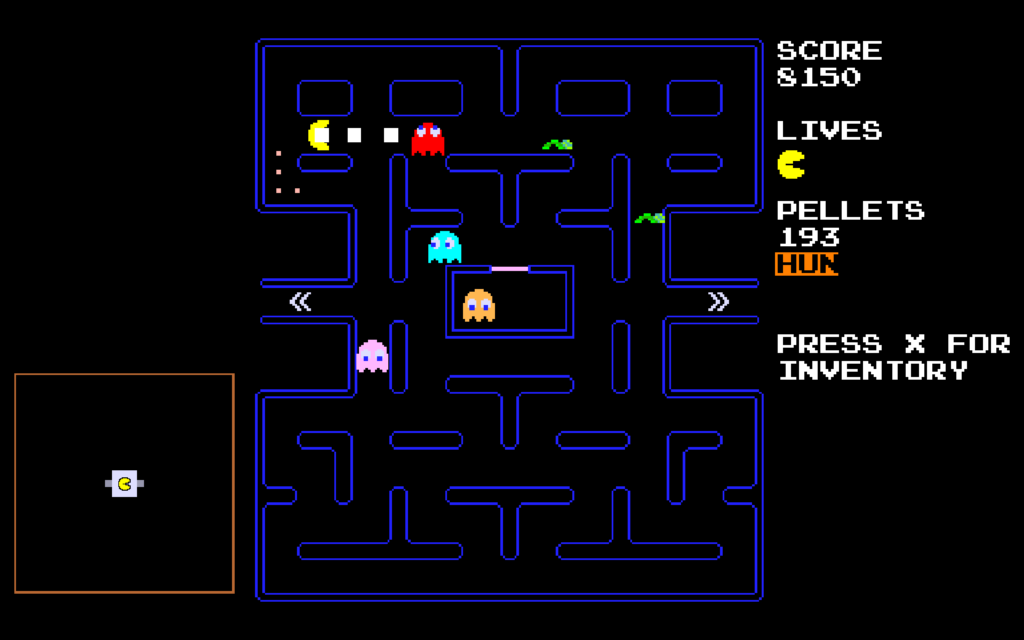
Also, eating the Energizers in the corners doesn’t make the ghosts vulnerable. Instead, Pac-Man can shoot the dots he eats at the ghosts to defeat them, and while an Energizer is active his shots are stronger. Pac-Man must be facing into a corridor in order to fire, meaning he must often be running directly towards a ghost before he can shoot it. The Red ghost has the least health, and can often be gunned down even without an Energizer, while the Orange ghost has a lot of health, and usually must be shot while it’s traveling away down a long corridor. Fortunately, he’s not any smarter than he was in the arcade game.
A big difference is the Hunger meter at the side of the screen. It constantly runs down, at an alarming rate, as you play. If it runs completely out, the game ends immediately, regardless of how many lives you have left! You have to make sure to keep tabs on your hunger. And dots and ghosts don’t refill it, only fruit does, and only a bit of it. What Pac-Man can do, however, is save it for later: he has an inventory now, and grabbed fruit go right into it. You press the X button to bring up a menu, and can then pick out the fruit and munch it on down.
If you had to rely on the fruit from the center of the board though you’d starve pretty fast, so now Pac-Man has the ability to plant fruit in the maze. If you plant it, of course, then you can’t eat it, but it doesn’t take long for it to sprout and start generating new fruit of its own. You’ll soon have to start relying on this to survive.
When you clear the board of dots, the monster box opens up and when you go inside you get this screen:
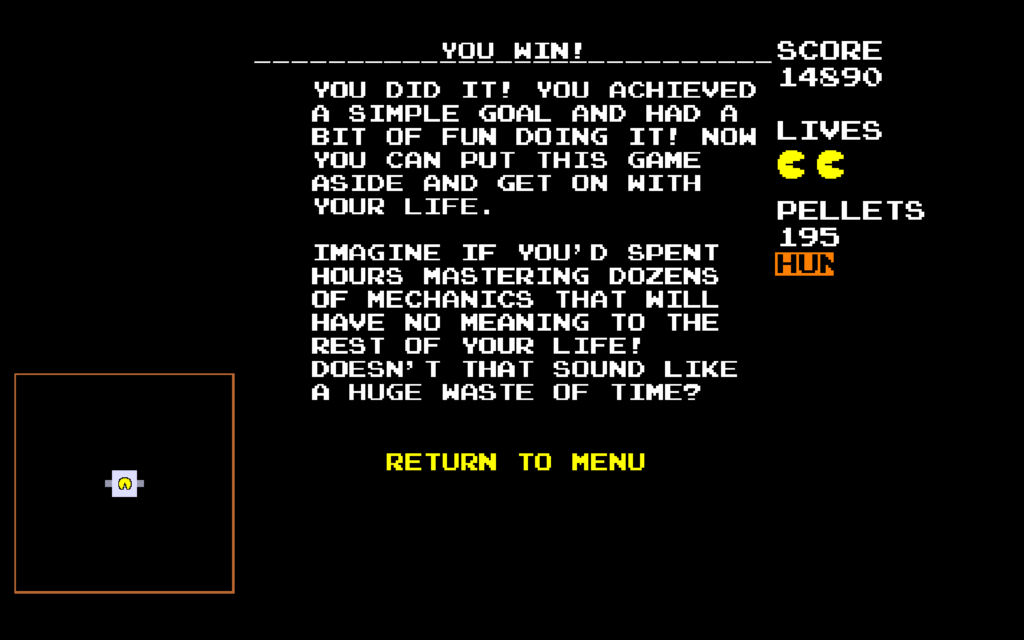
This somewhat sarcastic screen appears to suggest that there’s more to the game than the starting screen. And it’s right.
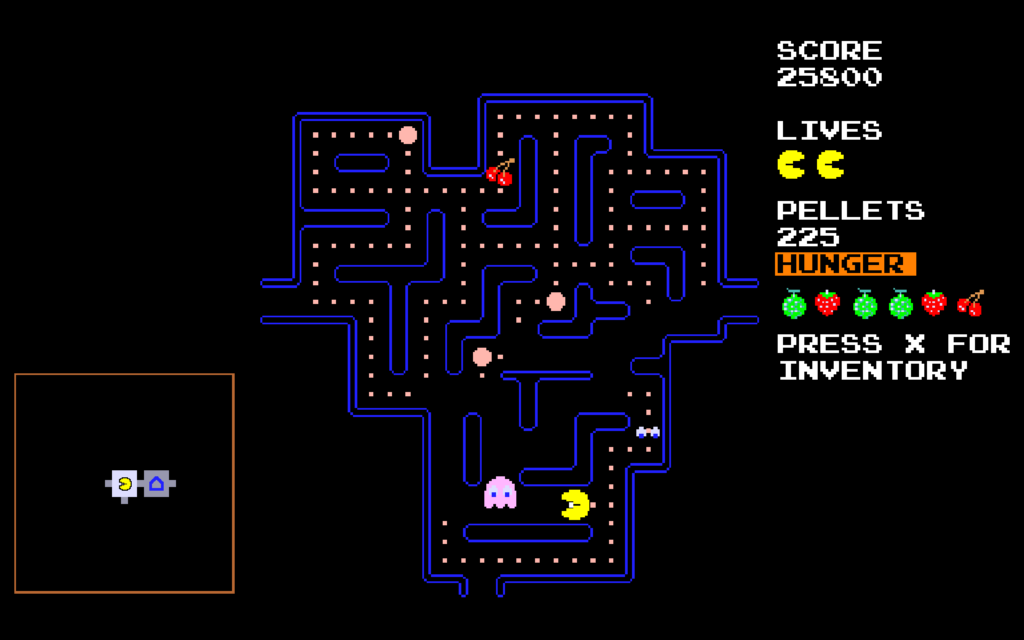
Once you clear the board of dots, the game doesn’t end. Ooooh no, you’re just getting started. No, the board you start in is the “home” location in a much larger maze, accessed through the tunnels on the sides of the screen. As you explore this maze, new locations will be filled in on a map in the lower-left corner. The borders of this map aren’t the ultimate edges either. This greater map is created anew with each play; sometimes you’ll have tricky situations right near outside the starting board, and sometimes it’ll be fairly easy going. There are ghosts and dots and fruit in these boards too, and sometimes more Energizers, but there are no regeneration boxes. Ghosts you defeat out there turn into eyes, but have no way to turn back into ghosts, and eventually just fly away.
Out there in the maze there’s a lot of weird things to find. Like shops.
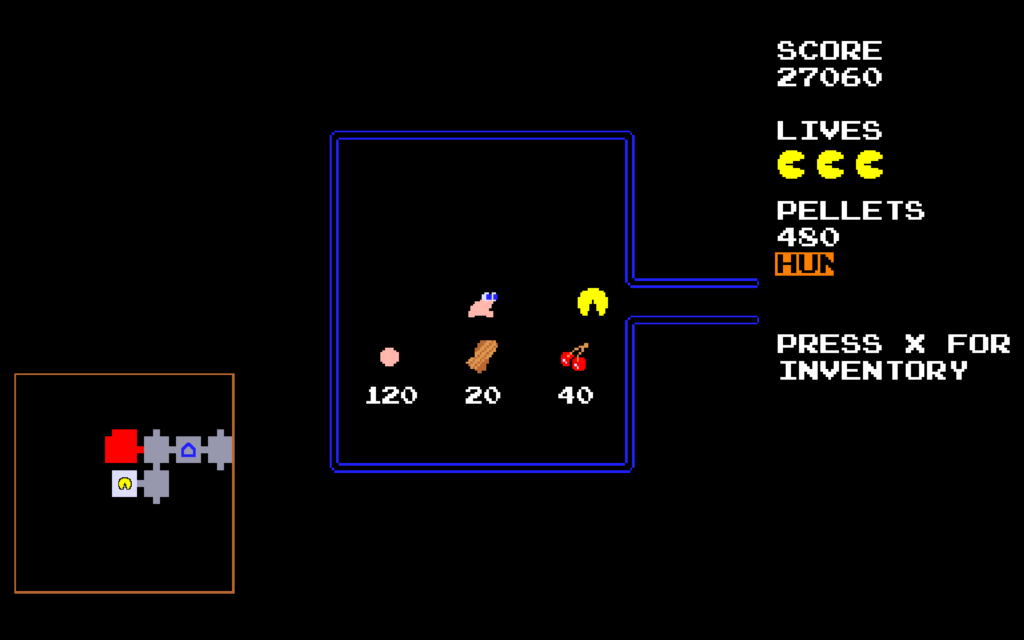
And quest givers:
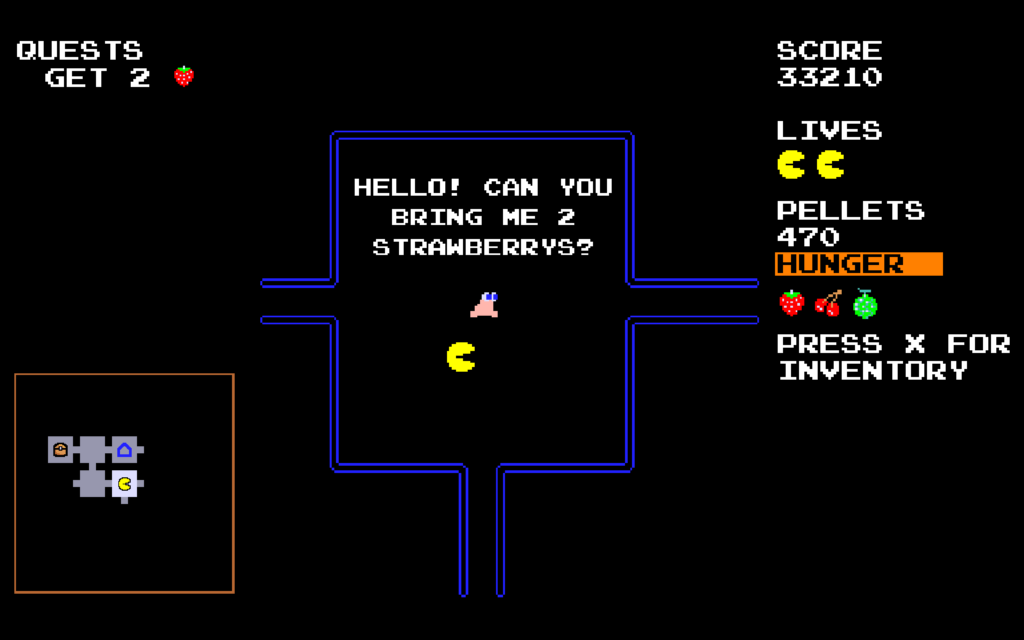
And locked treasure rooms:
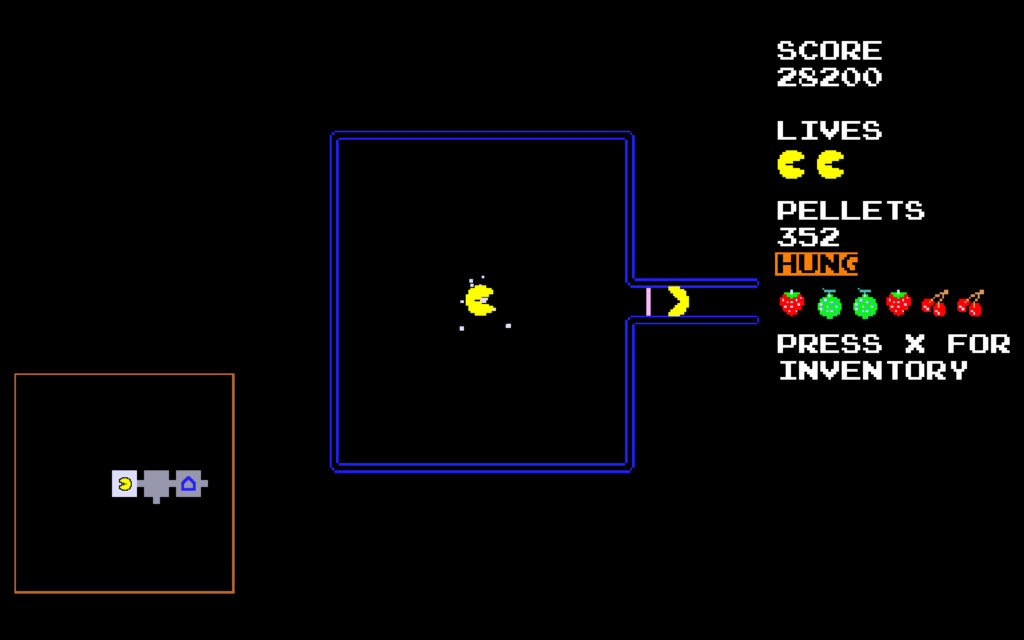
And areas of solid stone, and ore, that must be dug through Minecraft-style with a Pick (go into the Tools section of the menu to use it):
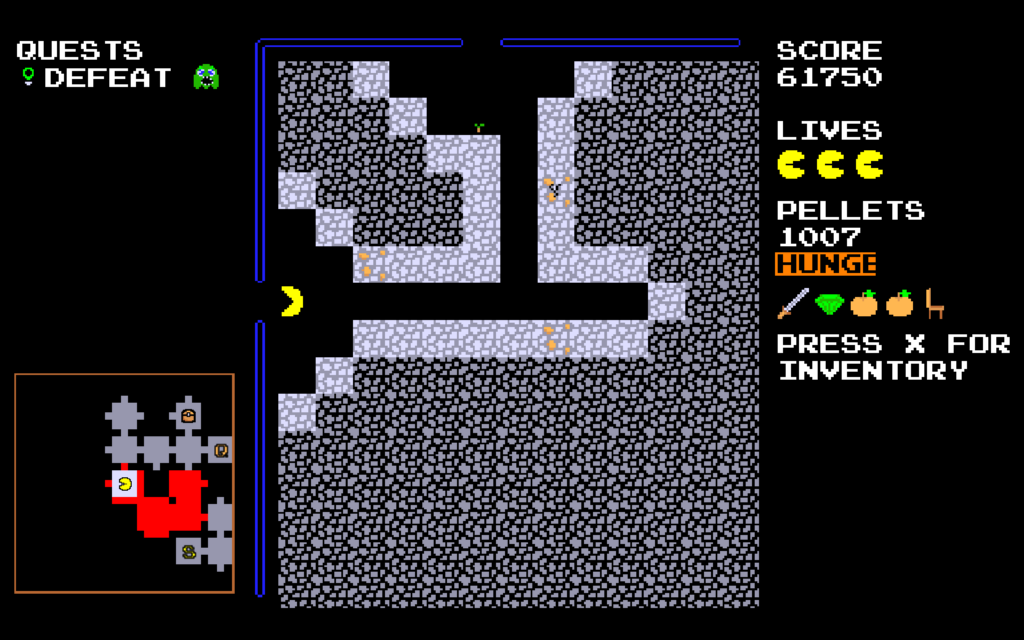
And a whole Pokemon-themed area:
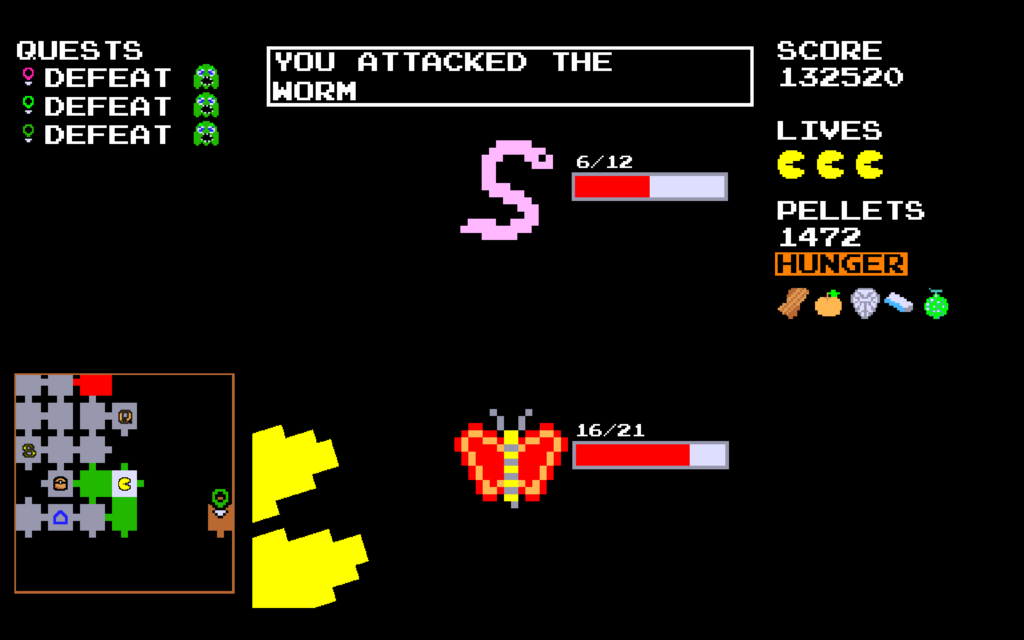
And there’s crafting! And you can spend Galaxians you find to enhance stats! And boss ghosts to defeat! And probably more! I keep finding new parts to the game as I play. The game’s itch.io page even claims there’s a final boss to defeat, in the form of an evil version of Pac-Man, but I haven’t found it.
You can save your game, but in roguelike style, your session ends when you do it, and its deleted when you resume. Your game ends either when you run out of lives or your Hunger meter depletes, and both are way too easy to have happen. I find it helps to plant at least one fruit on each screen, but don’t carry around too many: if you’re holding too many things you become “Encumbered” and slow way down!
It’s an enjoyable game, for awhile at least. Pac-Man’s movement speed quickly feel much too slow for exploring the huge over-maze. His movement speed is one of the things you can upgrade by spending Galaxians, but I’ve only just recently even found one of those in the maze, and it was in a locked treasure room. It feels like there’s a lot more to the game than the permadeath feature allows me to see, but I’m still trying.
It is true that, ultimately, 21CRPM is a joke game, and the point is that Pac-Man doesn’t need elaboration upon, and the extra mechanics exist mostly to feel tacked on. There may not even be a real point to them. But neither is there a point to video games in general, and it’s still fun to explore them, for a while.
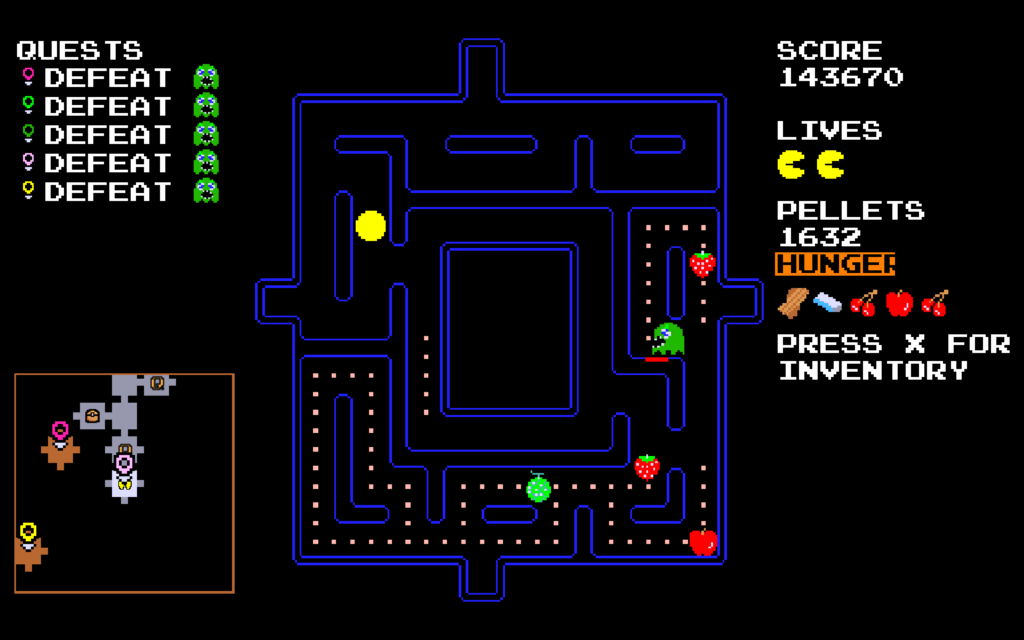
21st Century Roguelike Pac-Man (itch.io, $0)




